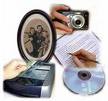 Empowering Student Voices
Empowering Student Voices
Everyone has a story to tell. Some traditions place oral storytelling as the vehicle to pass history and culture to the next generation. Others use storytelling to teach life’s lessons. Some use it as a diary of thoughts emanating from events and some view it as an opportunity to share their wisdom. Regardless of the reason, the process of storytelling is a powerful literacy tool in reading and writing.
Learning Sequence of Digital Storytelling
1. GOAL: Set a goal/message for your project. What do you wish to communicate?
- What performance indicators or assessment milestones are going to be used?
(*Templates: rubric-storytelling1; rubric-storytelling2)
2. CREATE/EDIT STORYBOARDS (backbone of your process/product):
- Use a storyboard to organize thinking, sequence, all elements ( Storyboard_template)
- Use O365 to collaboratively write a script.
3. CREATE DIGITAL STORY/MOVIE: (Video Editor is on the base image) ![]()
- What multi-literacies will you include? (eg. images, audio, voice, music, colour)
4. ASSESSMENT: (What are your indicators of success? (eg. see rubrics))
5. SHARE YOUR STORY/CELEBRATE LEARNING.
- Set up a celebratory showcase to share your learning.
What Tools Might I Use?
- Inspiration/Kidspiration (organize ideas)
- Storyboard (ms word template above)
- Digital camera (capture images, drawings, short video)
- Word cloud generator
- Video Editor (create the movie)
- Sound Recorder: Audacity; Windows sound recorder; Vocaroo (online)
- QR Code Generators (newest line of 2D communication tool): Quirify, GoQR.Me, QR-Voice, i-Nigma (ipad/itouch app)